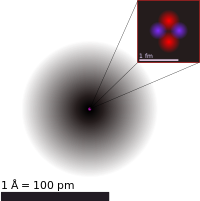
Photo from wikipedia
Abstract The concentration levels of trace metals of toxicological importance were evaluated in the total suspended particles (TSP) and particulate matter smaller than 2.5 μm (PM 2.5 ) collected in the… Click to show full abstract
Abstract The concentration levels of trace metals of toxicological importance were evaluated in the total suspended particles (TSP) and particulate matter smaller than 2.5 μm (PM 2.5 ) collected in the Metropolitan Area of Monterrey (MAM) in Mexico. Samples were characterized by inductively coupled plasma atomic emission spectroscopy (ICP-AES), X-ray photoelectron spectroscopy (XPS) and scanning electron microscopy with an energy-dispersive spectroscopy system (SEM-EDS). In addition, the data were statistically treated by the methodology of Pearson Correlation (PC) and Principal Components Analysis (PCA) to identify the possible emitting sources. Surface analysis of the particulate matter (PM) by XPS revealed that the most abundant elements were Ca, Al, Na, Zn, Cu and Mg. The deconvolution of the Ca 2p , Zn 2p and Cu 2p signals showed that the main contributors were CaCO 3 , ZnO and Cu/Cu 2 O, respectively. The bulk analysis of the PM by ICP-AES showed Fe, Cu and Zn as the most abundant elements. Fe-rich particles presented two different morphologies: the prismatic particles were associated with a natural origin, while the spherical particles with anthropogenic sources. The Zn and Cu were predominantly observed in the sampling stations with high vehicular traffic, and the emitting sources were associated with the burning of fuels from automobiles and the wear of the tires and brakes. The highest concentration of Pb was detected in the sampling station located near the industrial zones, and its cause was associated with the ceramic and glass industries, the burning of fuel oil in power plants and the production of lead-based batteries for automobiles.
Journal Title: Atmospheric Research
Year Published: 2017
Link to full text (if available)
Share on Social Media: Sign Up to like & get
recommendations!